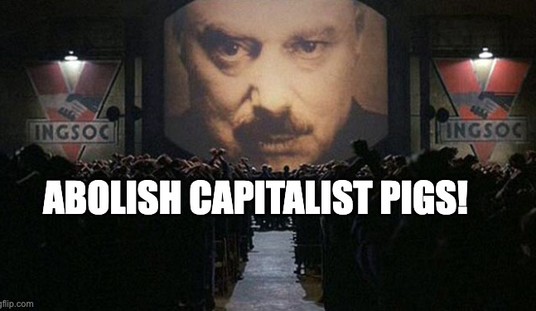President Obama simply cannot allow the start of his legacy-building second term to be dominated by complicated fiscal cliffs, unpopular sequesters, tiresome continuing resolutions, and, oh yeah — our still unimpressive economic “recovery” — which is why he’s looking to do some work on the big-ticket issues of immigration, gun control, and climate change. He made his inauguration speech into quite the spectacle of born-again climate-change zeal, and the environmental lobby has been quick to make it clear they’re going to try and hold him to that as he faces a series of tough energy-related decisions. The Keystone pipeline, cries for more further federal oil-and-gas permitting, increased natural gas-exports, and his appointees for Interior, Energy, and EPA, who will carry out his regulatory and spending policies, are all decisions that are coming in fairly short order.
Sen. Lisa Murkowski, Republican from Alaska, has a suggestion for a way Obama could make some energy-related compromises and move the country’s sluggish economy forward at the same time. She’s just introduced a pretty comprehensive energy plan that includes a lot of items for which Republicans have long been gunning (less onerous regulations and mandates, more permitting of federal lands, phasing out subsidies for specifically renewable power, etcetera), but isn’t without some major items that might make the whole thing more amenable to the other side of the aisle:
Top Republican senator on energy issues Lisa Murkowski unveiled an energy blueprint Monday chock full of about 200 policy recommendations, including increased development of the nation’s abundant natural gas and oil resources, and the establishment of an “Advanced Energy Trust Fund” to finance clean energy research and help pay down the national debt. …
“Call it a conversation starter,” Murkowski—who represents a major oil-producing state—said at a press conference Monday. “It is intended to be a source of ideas for discrete legislation that can attract, after vigorous debate, a strong base of support from a political and geographically diverse group of Members.”
Among other policy recommendations and goals contained in the blueprint—dubbed Energy 20/20—are approving the Keystone XL pipeline, easing permitting regulations for oil and gas production on federal lands, and research and development into energy storage technologies that would make wind and solar more cost-effective.
Among the provisions that could help the plan appeal to Democrats and the White House are using energy revenues to provide R&D funding, more hydropower and nuclear research, a modest but not mandated climate policy, boosting energy efficiency, and other ideas that do not include merely throwing money around for ineffectual show. Brad Plumer details a few:
3) Use revenues from expanded oil and gas drilling to fund advanced energy. Yes, oil and gas drilling have been booming of late. But Murkowski argues that the U.S. government could be doing even more. For instance: Open up 2,000 acres in the Arctic National Wildlife Refuge (ANWR) for exploration. Open the Outer Continental Shelf off the coast of Virginia and the Carolinas. Speed up permitting for drilling on federal lands and waters. …
4) Build more dams. In her report, Murkowski notes that hydropower is often excluded from newer clean-energy initiatives because dams can be controversial. …. The blueprint cites research (pdf) from the Energy Department suggesting that the United States could squeeze an additional 300 gigawatts of hydropower from upgrading existing dams, electrifying many existing dams, and putting dams in smaller rivers. That’s roughly 30 percent of U.S. electric capacity. …
8) Boost the energy efficiency of the U.S. economy, albeit without government mandates. Key part of this section: “Promote a comprehensive energy efficiency approach by making financing accessible for efficiency retrofits, both in the federal space and private markets, and pursuing integrated efficiency systems, without creating any mandates, all while pursuing efficiency per unit of GDP rather than less energy production.”
It’s not the perfect energy plan of my wildest daydreams (most of you know how I feel about subsidies, harumph), but it is a vast improvement over the Obama administration’s current practices and includes a lot of concessions and practicalities that could indeed help ‘start on conversation’ on letting Americans to take better advantage of our energy reserves… though I doubt the greenies would allow such a thing.








Join the conversation as a VIP Member